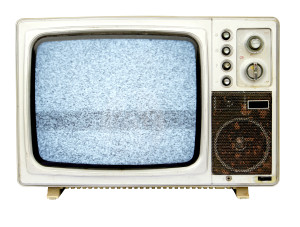Blog: Yelling at Machines
Article By : David Benjamin

Reality Bites: For sanity's sake, please design in an "oops" button.
MADISON, U.S. — I yell at machines.
More accurately, I yell at “devices,” the little wonders of technology that fascinate geeks and mystify everybody else.
Okay, here’s how it all started. One evening, not long ago, my wife and I arrived home from dinner out and settled in for a few vegetative hours of TV. But as I handled the remote control, I touched one of a dozen buttons I never touch. Suddenly, the TV screen went gray. The audio continued jabbering away and every other function on the remote behaved normally. But there was no picture. No combination of buttons, no item on the ironically named “Menu,” no amount of inventive double-click maneuvers did anything to restore the picture.
Within a minute, I began to yell at the machine.
My wife, who has been a technology writer, consorting with engineers and techno-wizards for her entire career (she was once buddies with one of the guys who invented television!), tried to curb my yelling. She accused me of yelling at her. I said, no, no, no, I’m yelling at the stinking damn impenetrable TV (actually, the remote control). She said (well, she yelled back), quite sensibly, that neither TV nor remote could hear me. So I was, for all practical purposes, yelling at her.

This high-volume exchange continued while we joined unharmoniously in efforts to plumb the conundrum of our audio-only television through various button-stabs, unpluggings, and re-pluggings. As we did so, I yelled and my wife explained (for the thousandth time) that machines, devices, and technologies do not think like humans. They follow a rigid series of systematic and entirely nonintuitive digital steps that a human operator must follow slavishly, else the machine, device, or technology will feel bewildered and will retaliate in a way that no human user can fathom — rendering, for example, the TV screen totally blank and offering no advice whatsoever for restoring the lost function.
Eventually, I was the one who (accidentally) divined a solution. We unplugged everything from the wall socket, forcing the TV to forget why it had gone into video hibernation and compelling our cable box to “reboot” its entire idiosyncratic universe.
But my wife was right. I wasn’t yelling, really, at the device. Nor was I yelling at her. God forbid. I was yelling at what Arthur Koestler once, lyrically, termed “the ghost in the machine.” Koestler was referring to the almost mystical marriage of human ingenuity to the inanimate materials that bring invention to life, either in poetry or in a series of ones and zeros. The operative word here is “human.”
All of our devices — until, of course, finally, Cyberdyne Systems makes us inferior to machines and as obsolete as carbon-based units in the robo-utopia soon to come — have their origins in the human mind. Humans came up with the wheel, the eggbeater, the folding smartphone, and everything in between.
But what sort of humans are we talking about? They’re not like most of us.
Every creative community is a sort of monastery, where its denizens develop a language and ritual separate from the outside world. Indeed, for example, there are academics, poets — and even multifunctional storytellers like me — who can read, understand, and even find pleasure in T.S. Eliot’s “The Wasteland,” a poem that most folks can’t make head nor tail of.
However, poetry — like technology — isn’t universally abstruse. There are lots of poems we all get: Robert Service’s “The Cremation of Sam McGee,” Ogden Nash’s “Fleas” (Adam/Had ’em), or the immortal lines that begin, “I never saw a purple cow…”
Service, Nash, and “Purple Cow” are the eggbeaters of poetry.
But poets are loath to spoon-feed the reader. They love plunging into introspective obscurity, linguistic complexity, elusive allusion, and even the odd riddle. They tend to aim more toward the plaudits of their fellow monks than for the enlightenment of the little old ladies who come to morning Mass.
As do technologists. Indeed, they must make devices for popular use — moreso than poets. But like poets, they are loath to expose their every secret. Nor, like many a poet, are they fully conscious of the fact that the intricacies they “integrate” into their inspirations are inaccessible to the rank-and-file user.
Indeed, when Shelley wrote “Ozymandias,” was his metaphor obvious to the hod-carrier, the housemaid, the grammar school pupil? When Yeats summoned up that “rough beast” slouching “toward Bethlehem to be born,” how many of us ordinary slobs grasped the terrible paradox of Yeats’ dark vision?
And so it is with the TV remote. And the TV. And the smartphone that betrayed me Saturday.
All I wanted to do was plug in my credit card “square” so that I could sell a copy of my brilliant new book, Jailbait, to good old Bob. But, clumsily, I hit a button and erased a digit on my screen. One number. This tiny blunder rendered every ensuing function inoperable. My credit card reader was suddenly just a plastic rock.
Also, being amongst friends other than my wife, I wasn’t free to yell at the machine. I instead undertook the usual suite of pointless shutdowns, restarts, and multibutton maneuvers — none of which achieved a damn thing. I resigned myself to asking Bob for cash, then calling up the bank on Monday to reidentify myself to the machine and to the gremlins built (by the monks of technology) into its bloodless, mindless, merciless bowels.
There is a solution to this timeless clash between regular people and the monks who design technology after the cloistered fashion of Shelley and Yeats. There’s an “Adam had ’em” truce available. On every remote, on every keyboard, and in every control panel and “center-stack” on every device — tiny or gigantic — all the monks of obscurity need do is add one universally understandable button.
Every person who has ever made a wrong turn, said the wrong thing, inserted the wrong screw into the wrong hole, hit the wrong button and then, instantly, regretted this error, has responded by saying, “Oops” (or the equivalent in another language).
It seems to me that a technology community that can devise a wristwatch with more computing power than the rooms full of mainframes that put Neil Armstrong on the moon, that can turn a billion people into stumbling zombies staring at four-inch screens, that can infiltrate every voting system and every social media platform in an entire country and alter the outcome of a national election — well, certainly these omnipotent geeks can come up with a simple digital corrective to a finger that has gone astray. It seems possible to introduce a button that allows its human user a do-over without penalty, without having to call up technical support and struggle to understand what Brenda from Bangalore is babbling about.
A button, please, on every device, that just reads: OOPS.
Subscribe to Newsletter
Test Qr code text s ss


